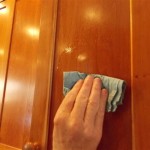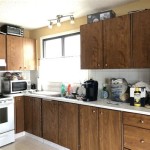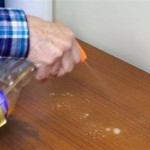Do I Need to Sand My Kitchen Cabinets Before Painting?
When it comes to refreshing the look of your kitchen, painting your cabinets is a transformative solution that can dramatically enhance the aesthetics and functionality of the space. However, before you dive into this project, it's essential to determine whether sanding your cabinets is necessary. Here's a comprehensive guide to help you understand the factors to consider:
1. Cabinet Type and Condition
The type of cabinet material and its current condition greatly influence the need for sanding. If your cabinets are made of solid wood, they likely have a beautiful natural grain that you may want to preserve. In this case, light sanding may suffice to remove any imperfections or old finish without compromising the grain. Alternatively, if your cabinets are made of laminate or melamine, sanding is generally not required as these materials have a smooth, non-porous surface.
If your cabinets are heavily damaged or have multiple layers of old paint, sanding becomes more crucial to create a smooth and even surface for the new paint to adhere to. However, if the damage is deep, such as gouges or chips, it may be necessary to fill or repair the areas before sanding to ensure a seamless finish.
2. Paint Adhesion
Sanding plays a vital role in enhancing paint adhesion, especially on glossy or smooth surfaces. By creating small scratches or abrasions on the surface, the new paint can better penetrate and bond, resulting in a lasting finish. If you skip sanding on such surfaces, the paint may not adhere properly and could easily chip or peel in the future.
3. Paint Color Change
If you're planning to drastically change the color of your cabinets, sanding becomes more important. This is because the new color may react differently to the underlying finish, potentially resulting in uneven coverage or discoloration. By sanding the surface, you remove any previous finish and create a uniform base for the new paint to adhere to, ensuring a clean and consistent result.
However, if you're only planning to apply a similar or slightly lighter color over the existing finish, sanding may not be necessary. In this case, a thorough cleaning and degreasing of the cabinets may suffice to prepare the surface for the new paint.
4. Personal Preference
Ultimately, the decision of whether or not to sand your cabinets is also influenced by personal preference. Some people prefer the smooth, pristine finish that sanding can provide, while others may prefer to preserve the character and patina of older cabinets. If you're unsure about sanding, consider testing a small, inconspicuous area first to see if you're satisfied with the results.
Conclusion
Sanding your kitchen cabinets before painting is not always a requirement, but it can significantly improve the adhesion, durability, and overall appearance of the finished product. By carefully considering the factors discussed in this guide, you can make an informed decision that will ensure a successful and satisfying kitchen makeover.

How To Paint Kitchen Cabinets A Step By Guide Confessions Of Serial Do It Yourselfer

How To Paint Kitchen Cabinets A Step By Guide Confessions Of Serial Do It Yourselfer

A Small Sander To Sand Kitchen Cabinets Before Painting House Mix

What You Need To Know Before Painting Cabinets The Palette Muse

Should I Paint My Kitchen Cabinets Helix Painting

How To Paint Fake Wood Kitchen Cabinets Simple Made Pretty 2024

How To Clean Prep Wood Kitchen Cabinets Before Painting Do Dodson Designs
Refinishing Kitchen Cabinets A Beautiful Mess

A Guide To Painting Kitchen Cabinets Norton Abrasives

How To Paint Kitchen Cabinets Without Sanding Or Priming
Related Posts








